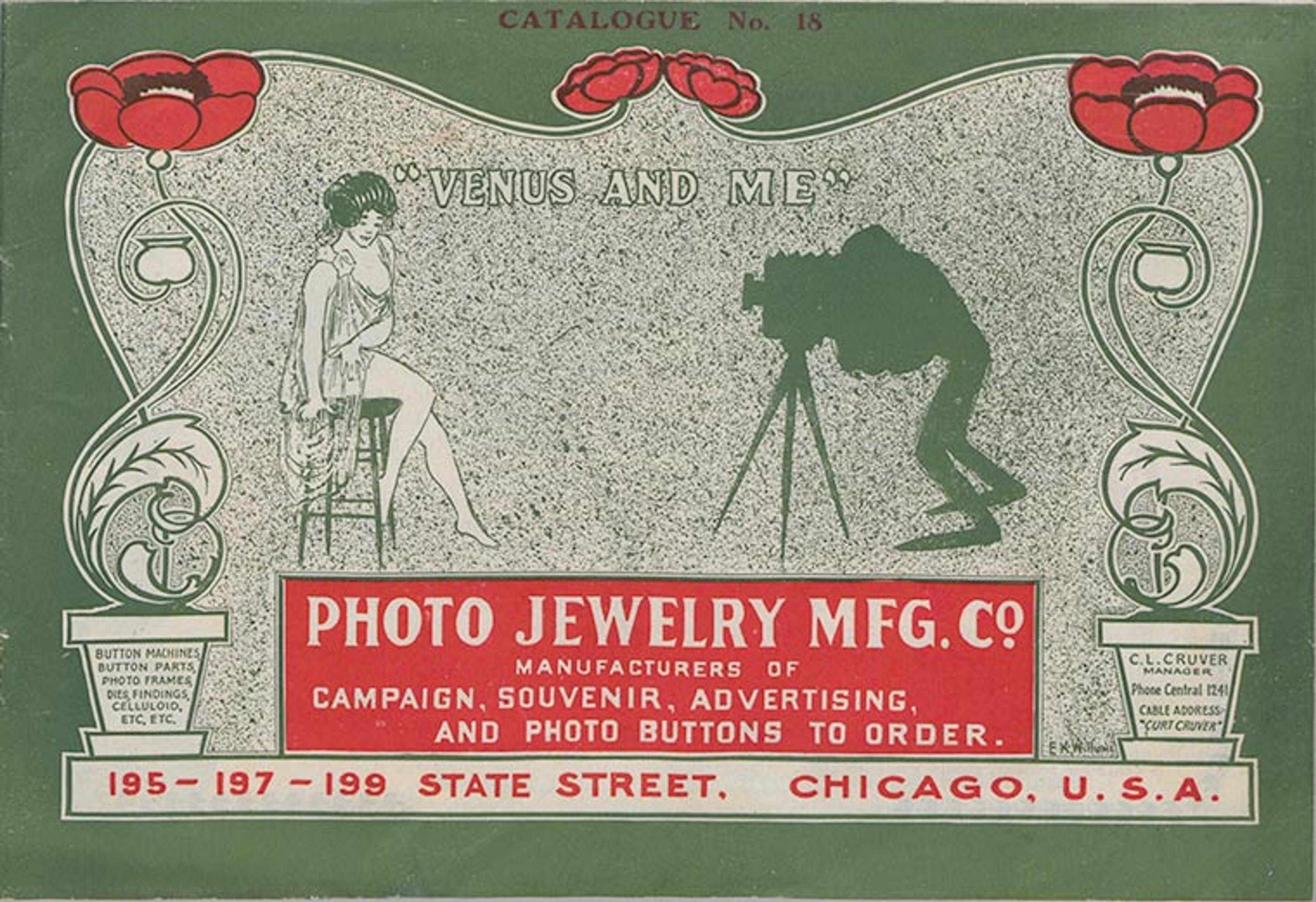
Venus and Me (Chicago : Photo Jewelry Mfg. Co., 1900).
Through a fellowship awarded by the Pratt Institute's School of Information, I served as an intern at the Thomas J. Watson Library for the 2017–18 academic year. During my time as an intern, I had the privilege of digitizing twenty-six early photography trade catalogues and manuals. I selected and retrieved books from the Joyce F. Menschel Photography Library, Thomas J. Watson Library, and The Robert Lehman Collection Library. Within this selection of materials, publication dates ranged between 1853 and 1914. Examining these historical volumes offers a lens (pun intended) into the rise of commercial and consumer photography during the late nineteenth and early twentieth centuries.

How to Make Photographs: And Descriptive Price List (New York: Scovill Manufacturing Co., 1889).
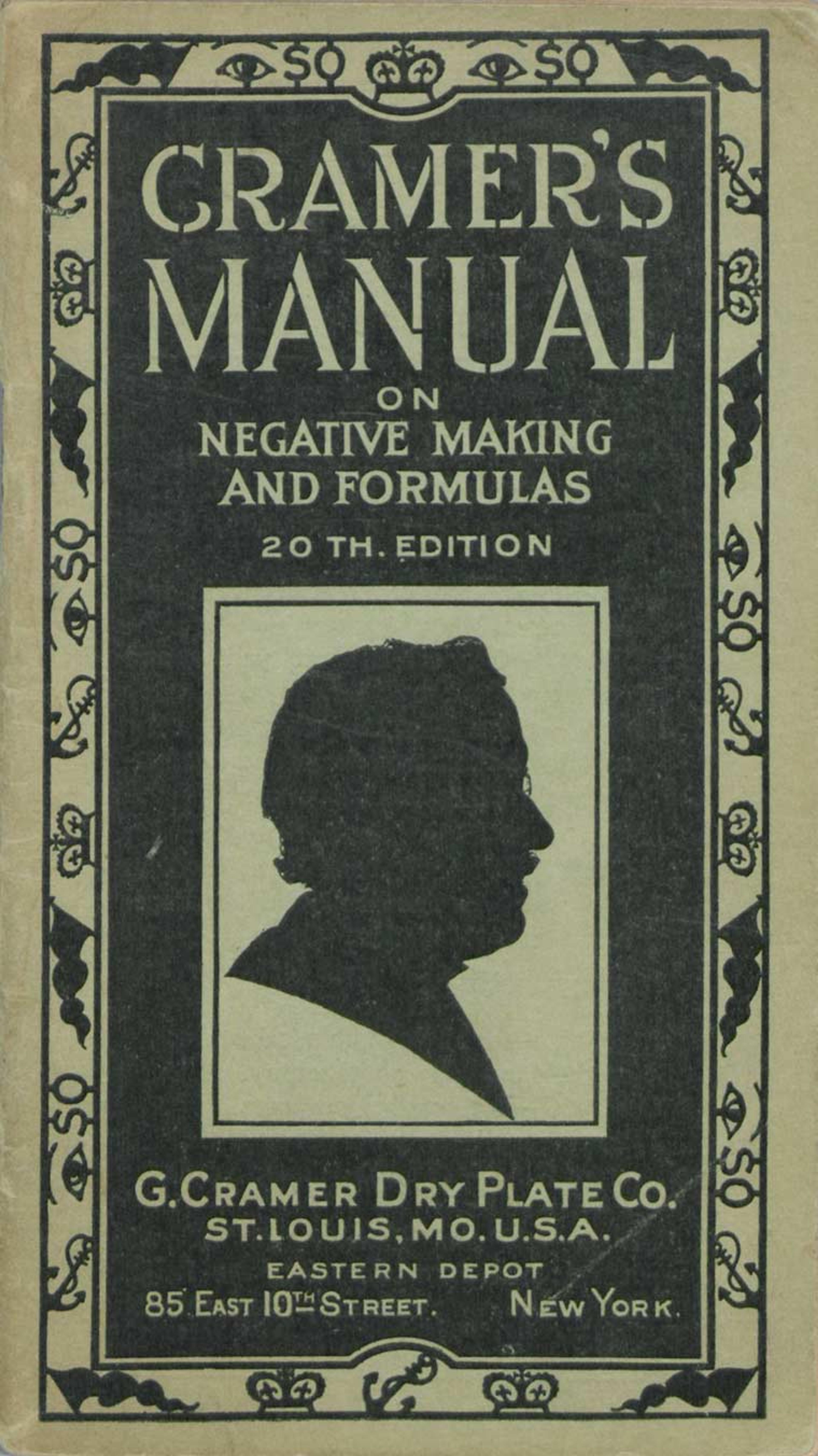
Cramer's Manual on Negative Making and Formulas (St. Louis, MO: G. Cramer Dry Plate Co., 1912).
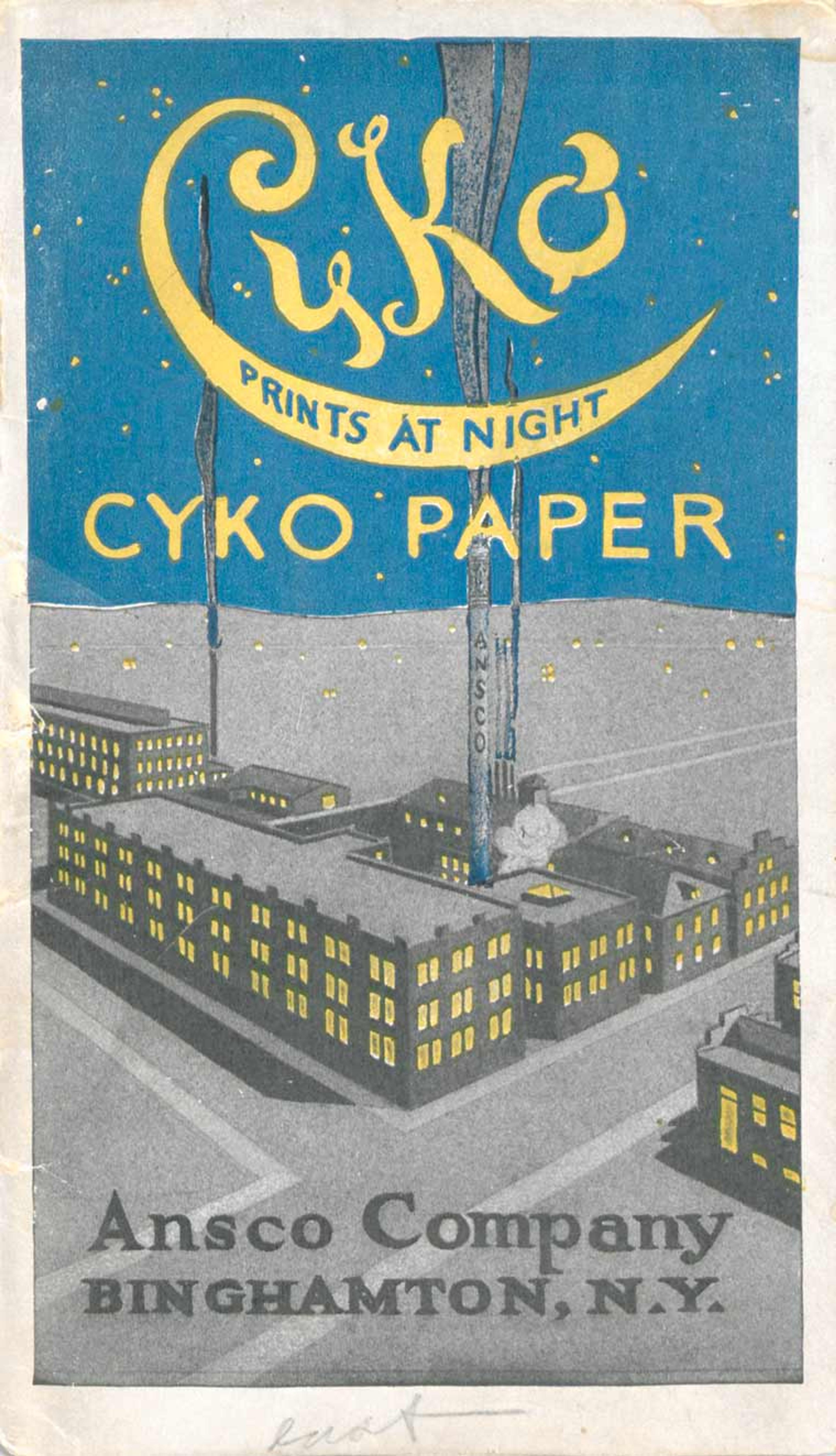
Cyko: The Positive of Photography (Binghampton, NY: Ansco Company, 1914).
Trade literature has long been a way for businesses to advertise their wares. Early photography trade catalogues and manuals, such as the Illustrated Catalogue of Photographic Equipments and Materials for Amateurs, illustrate the equipment and technologies available to the photographer as well as the common photographic processes at that point in time. These materials, often considered insignificant throwaways at the time of printing, now present numerous research opportunities across the history of photography, design, and publishing.

Photo Jewelry Mf'g. Co.: Campaign, Souvenir, Advertising and Photo Buttons To Order: Button Machines, Button Parts, Photo Frames, Dies, Findings, Celluloid, etc. (Chicago: Photo Jewelry Mf'g, ca.1900).
At Watson Library, my internship focused on a comprehensive overview of Watson's Digital Collections and digitization initiative. To develop a cohesive digitization project for the 2017–18 academic year, I began this process by combing through The Metropolitan Museum of Art Libraries' public-domain holdings of photography-related materials. My mentor, Robyn Fleming, and I received approval from the Department of Photographs to complete the digitization project. The primary goals were to preserve these trade publications through digitization and to make the digital surrogates freely accessible in the Digital Collections. As many of these volumes are rare, the use of digital copies limits handling of the physical materials, helping to ensure their long-term preservation.
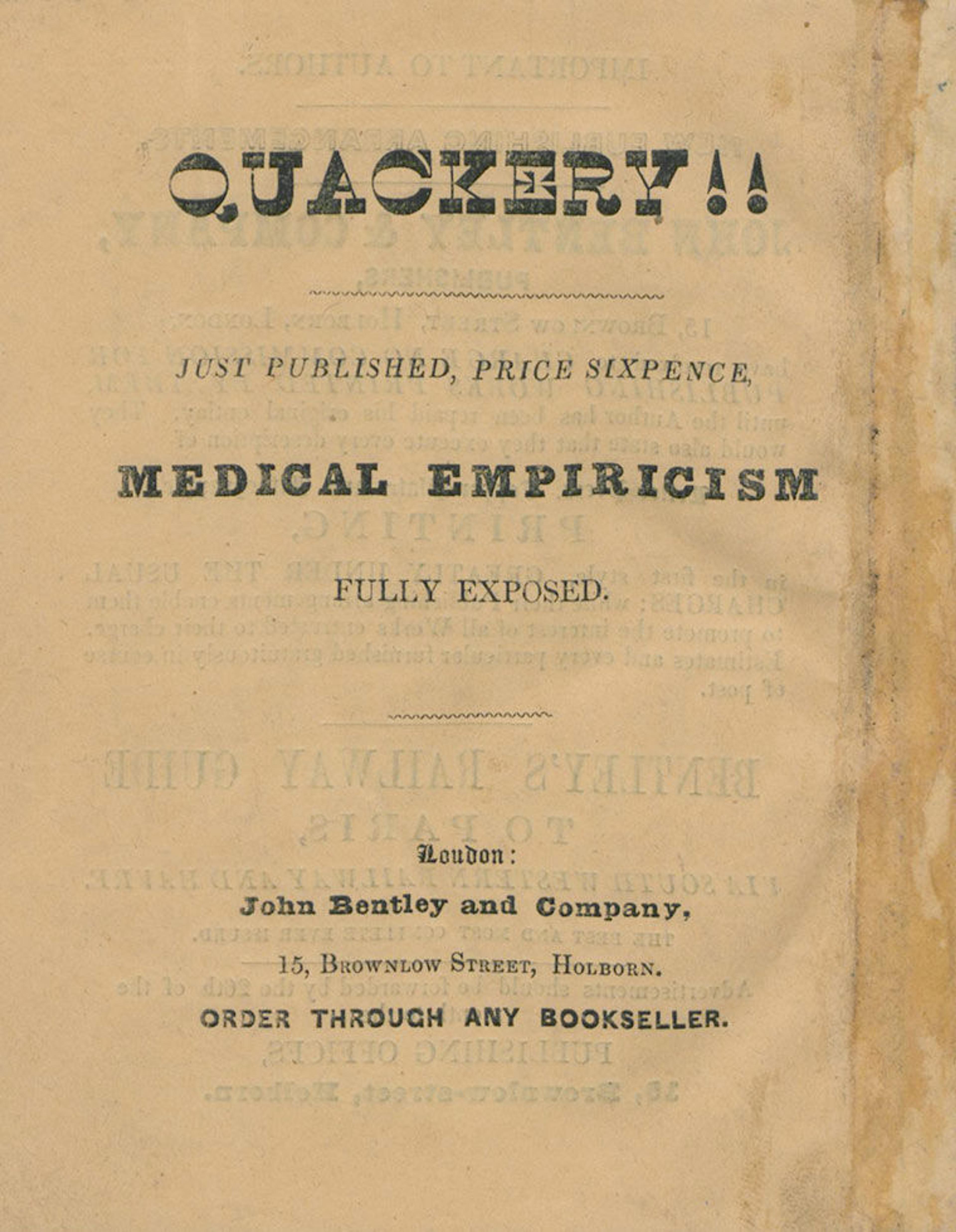
Attention-grabbing typography on the back cover of The Collodion Process for Taking Portraits, Views, etc. by the Action of Light Upon Prepared Glass Plates (London: John Bentley and Company, 1853).
Through completing this project, I learned the workflows for digitizing materials and processing images using a Zeutschel OS 12000 Scanner with OmniScan software. Additionally, I was trained on an Atiz Book Drive Pro—scanning several items that were already in the queue—while working through the selection and preparation for my project.

A Zeutschel OS 12000 scanner used for digitizing books and other collection materials in the Thomas J. Watson Library. Here, our custom "Pamphlet" setting is being used when digitizing Photo Frame Mfg. Co (New York: Photo Frame Mfg. Co., ca. 1900).
Trade publications are by nature ephemeral, so preservation is a foremost concern when handling this type of material. The twenty-six titles selected were strong candidates for digitization due to their fragility and research value. I was fortunate to receive two training sessions in the care and handling of library materials from Jenny Davis, associate manager for Book Conservation. During an advanced training session (pictured below), Jenny and I discussed the specific books in queue for the project and the potential conservation needs of each. Throughout this project, the Book Conservation staff was an invaluable resource in addressing my questions and concerns regarding proper handling and safeguarding of library materials.
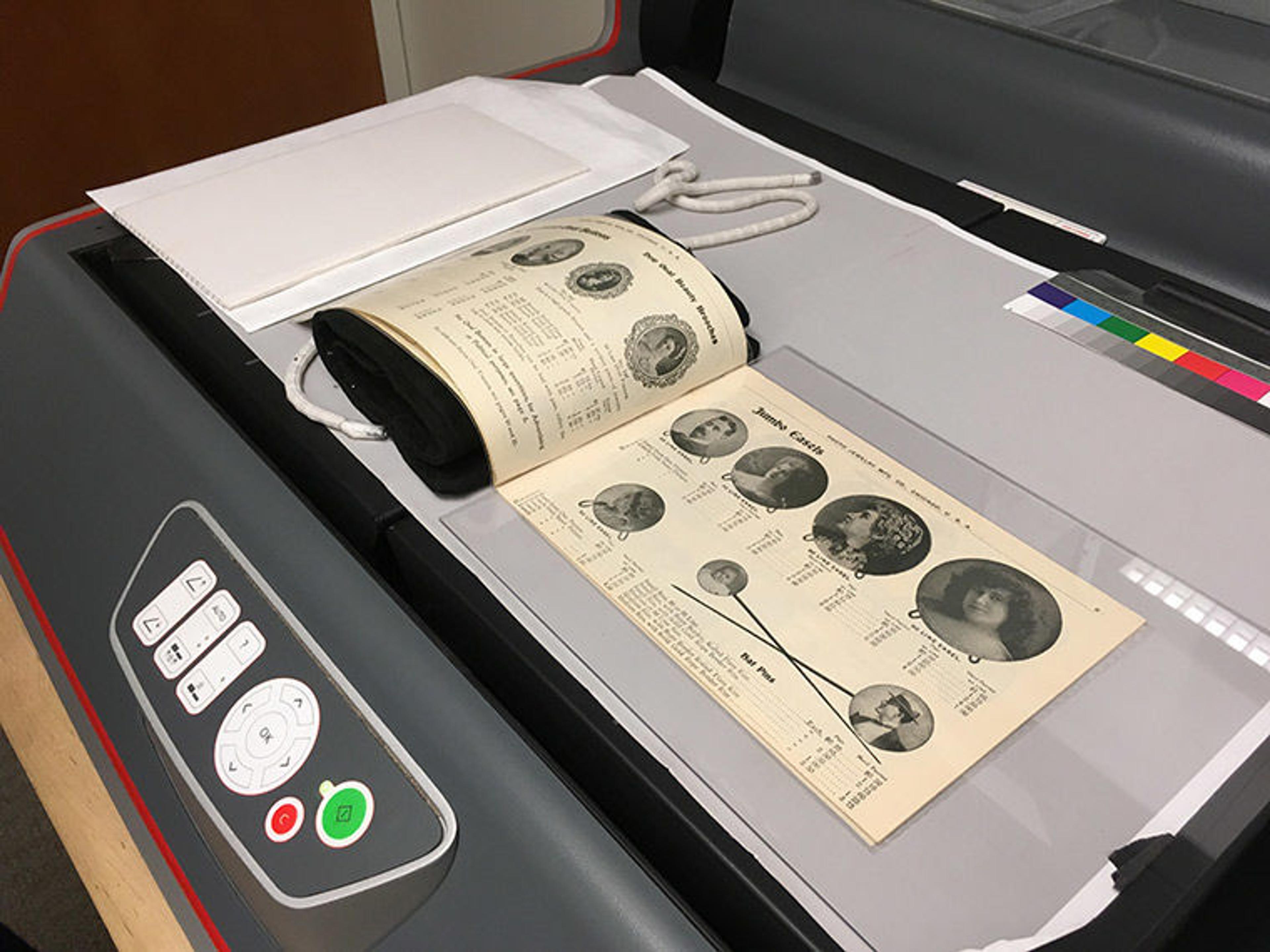
A library care and handling training session, led by Jenny Davis, in which the proper digitization station set-up is demonstrated for Photo Jewelry Mf'g. Co.: Campaign, Souvenir, Advertising and Photo Buttons to Order: Button Machines, Button Parts, Photo Frames, Dies, Findings, Celluloid, etc. (Chicago: Photo Jewelry Mf'g, ca.1900).
This project also involved evaluating and enriching bibliographic records, as well as original cataloging of The Platinotype For Black And Sepia Tones: Directions for Working and Price List of Paper, Platinotype Cards, Etc. Manufactured By Willis & Clements, a recent Joyce F. Menschel Library acquisition (pictured below). When all was said and done, I digitized and uploaded a total of 1,483 pages!
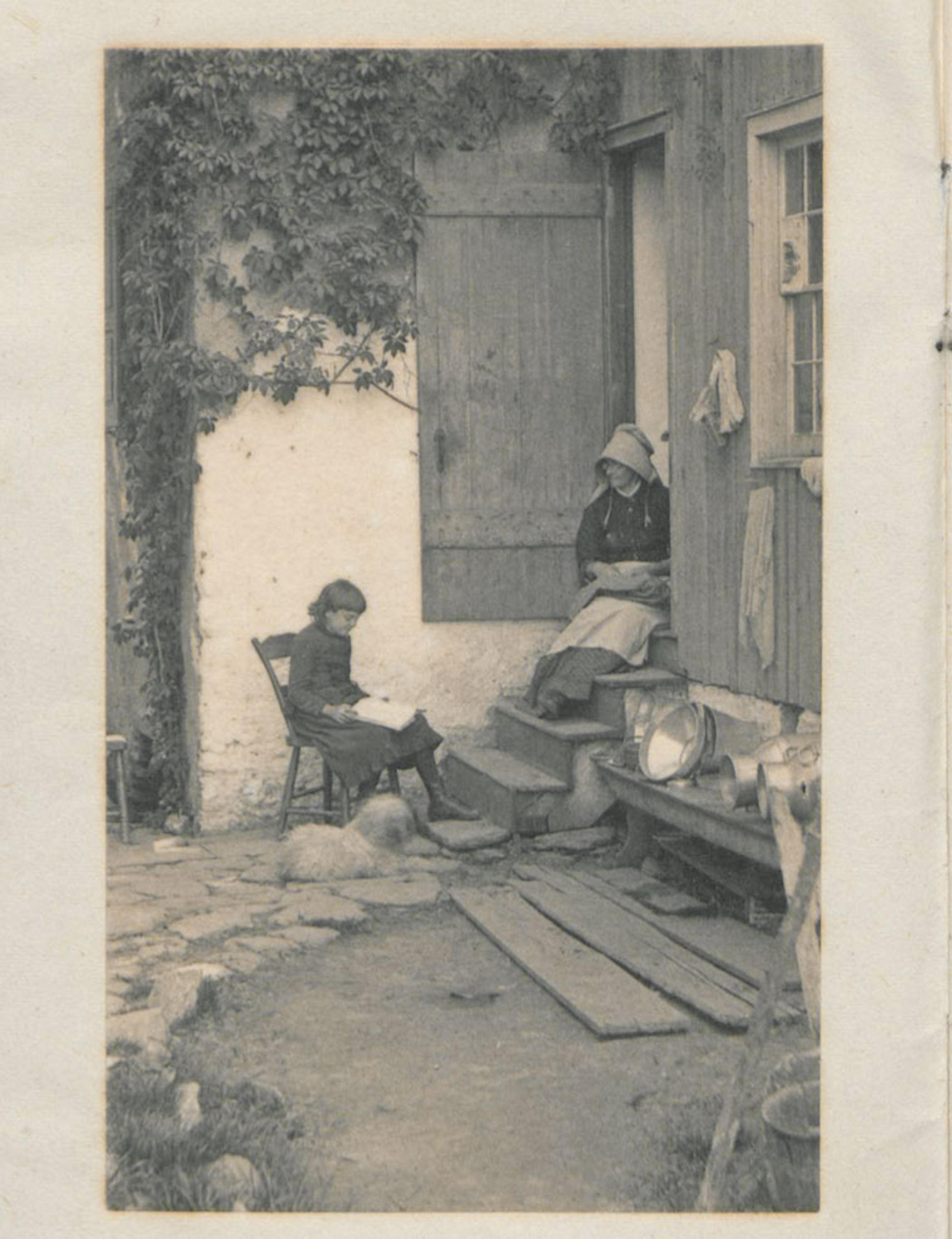
An original platinotype print from The Platinotype for Black and Sepia Tones: Directions for Working and Price List of Paper, Platinotype Cards, etc. Manufactured by Willis & Clements (Philadelphia: Willis & Clements, between 1880 and 1930).

"The Prismatic Solar Spectrum" from Frederic E. Ives, Isochromatic Photography with Chlorophyl (Philadelphia: Ives, Frederic Eugene, 1886).
While these photography trade publications provide valuable information about the history and development of photographic technologies, they also feature engaging illustrations and typography. Numerous pages contain richly detailed illustrations of photographic equipment and supplies available, ranging from cameras and lenses to studio accessories and chemicals.
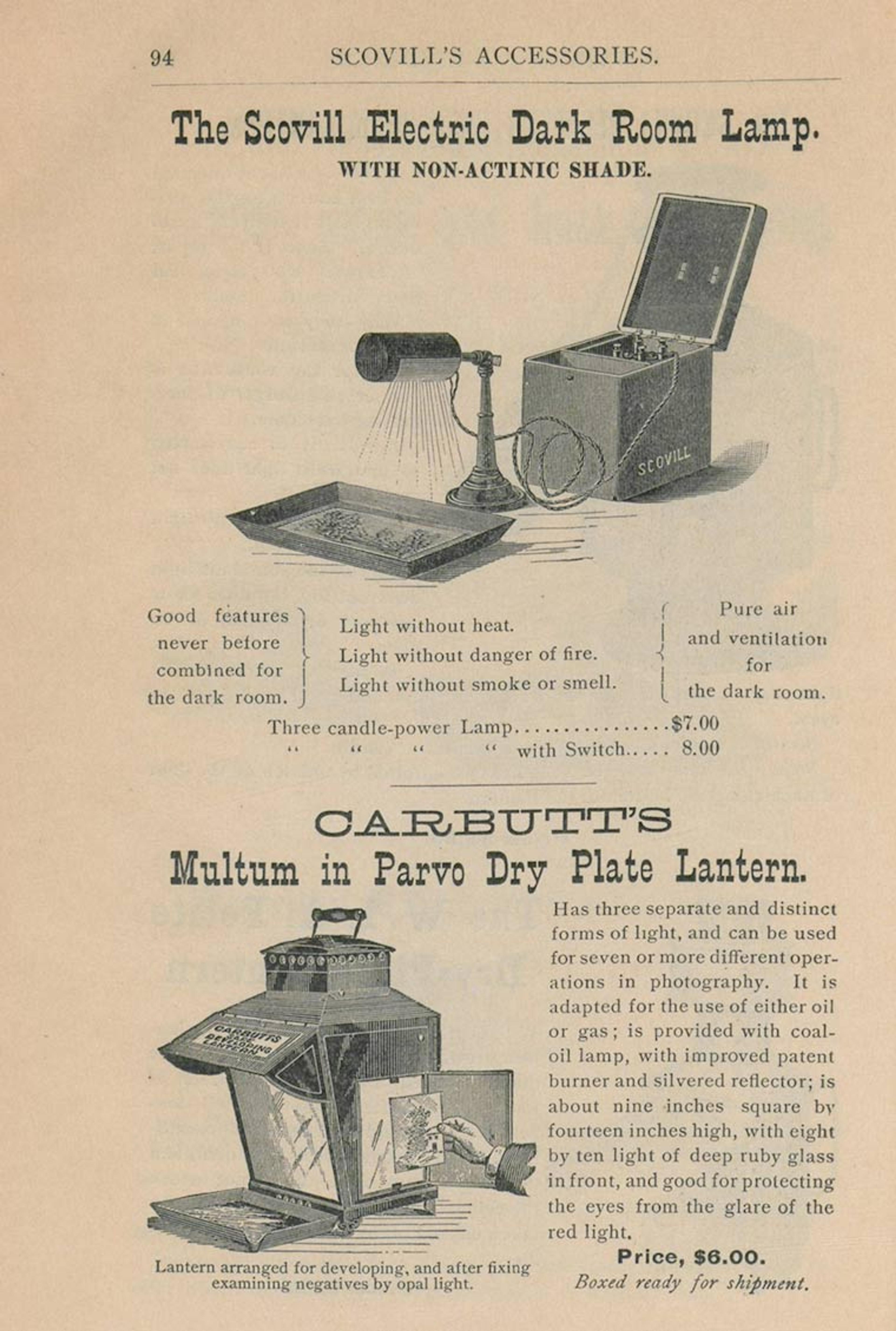
A page from Scovill and Adams Co.'s How to Make Photographs : and Descriptive Price List, illustrating an electric darkroom lamp and dry plate lantern (New York: Scovill Manufacturing Co., 1889).
The entire collection of Early Photography Trade Catalogs and Manuals is available to browse online. As my fellowship concludes, it has been an incredibly rewarding and educational experience to digitize these Special Collections materials. I am grateful for the opportunity to have worked at Watson Library and wish to thank my mentor, Robyn Fleming, as well as all of the wonderful Library staff who enriched my experience!
